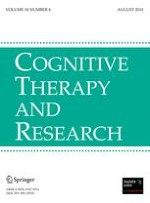01-08-2010 | Original Article
Anxiety Sensitivity in Childhood and Adolescence: Parent Reports and Factors that Influence Associations with Child Reports
Gepubliceerd in: Cognitive Therapy and Research | Uitgave 4/2010
Log in om toegang te krijgenAbstract
Research suggests that anxiety sensitivity is an important cognitive developmental precursor of anxiety disorders. Identifying the developmental origins of anxiety sensitivity may be facilitated by multiple perspective assessment (parents, children) coupled with an understanding of agreement in reporting. In general, disagreement between parent and youth ratings of the child’s emotions is common but is not well understood. Variables such as age and gender have been suggested as potential factors that influence agreement; however, this literature often produces inconsistent results. This study examined parent reports of their children’s anxiety sensitivity in order to explore the effects of age, sex, and ethnicity on cross informant associations with child reports using complementary statistical models. Parents and children (N = 202, aged 6–17 years) completed child and parent versions of the childhood anxiety sensitivity index [CASI (child) and CASI-P (parent)] as well as instruments assessing fears and manifest anxiety. Results indicated that the CASI-P demonstrated internal consistency, test–retest associations, incremental and concurrent validity estimates similar to those previously reported for the self report instrument. Moreover, reliability and validity were highly similar across age and child sex. However, age and ethnicity were found to significantly influence cross informant associations, and the statistical method used to examine cross informant associations produced differing conclusions. Results are discussed in terms of the utility of a parent report measure of anxiety sensitivity and implications of the differing statistical methods for clarifying the existing research on informant agreement in internalizing symptoms.
